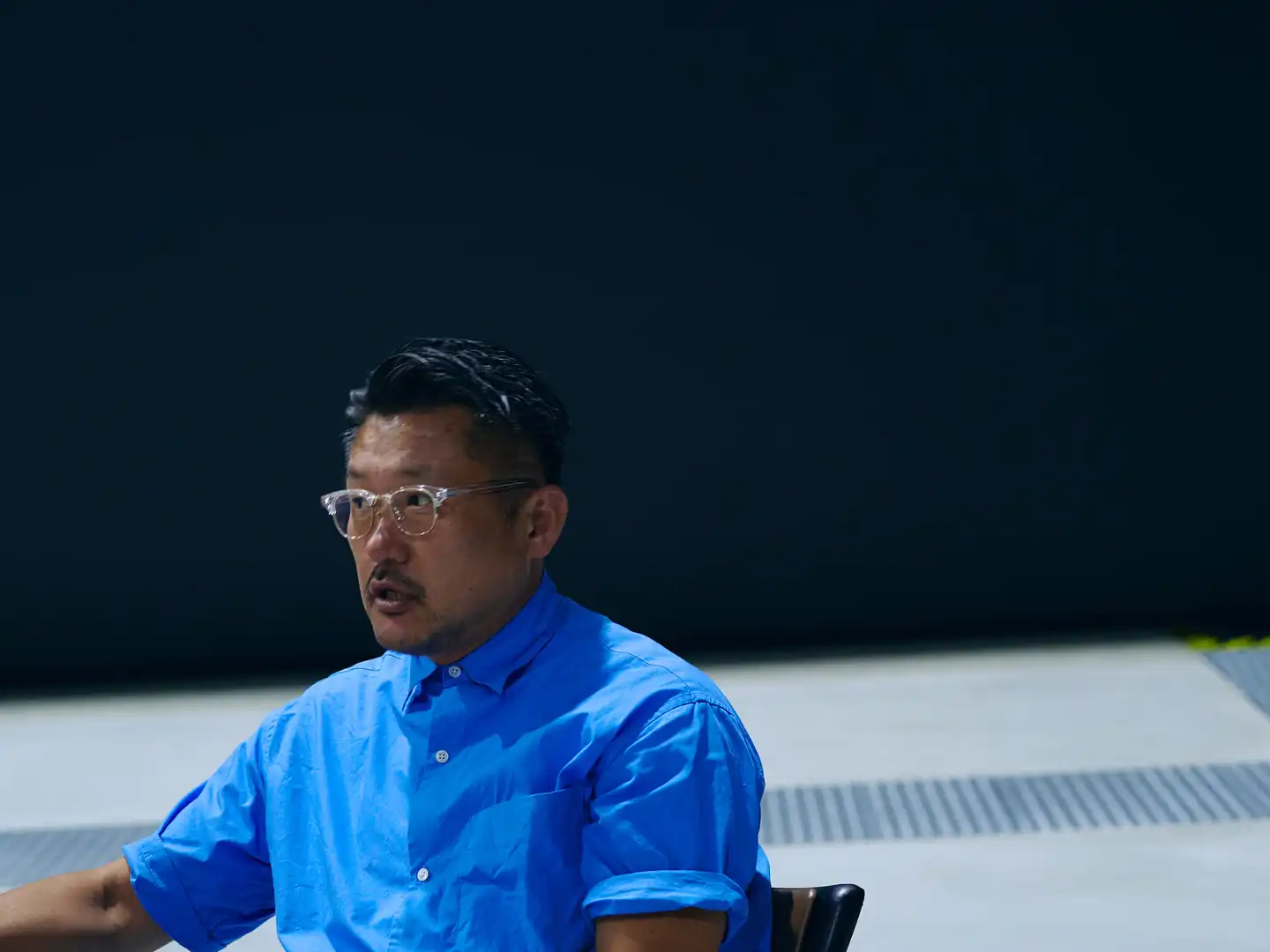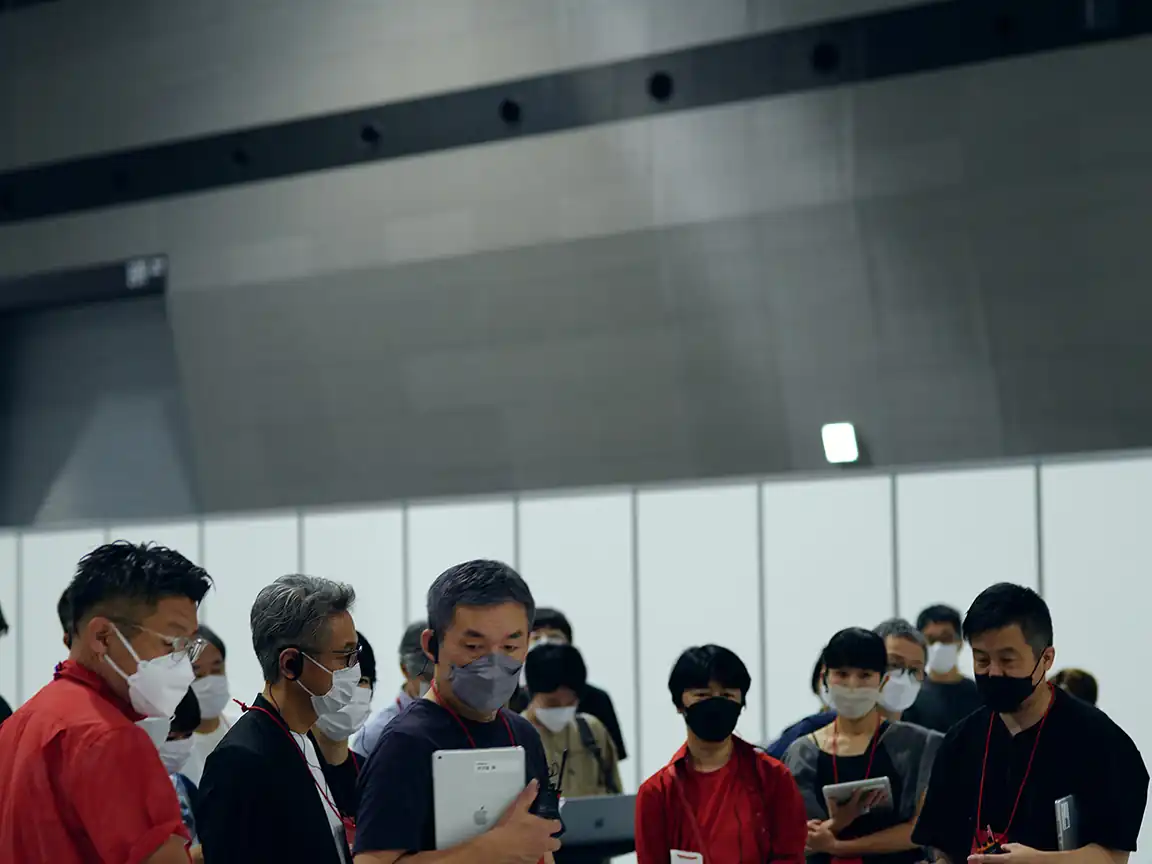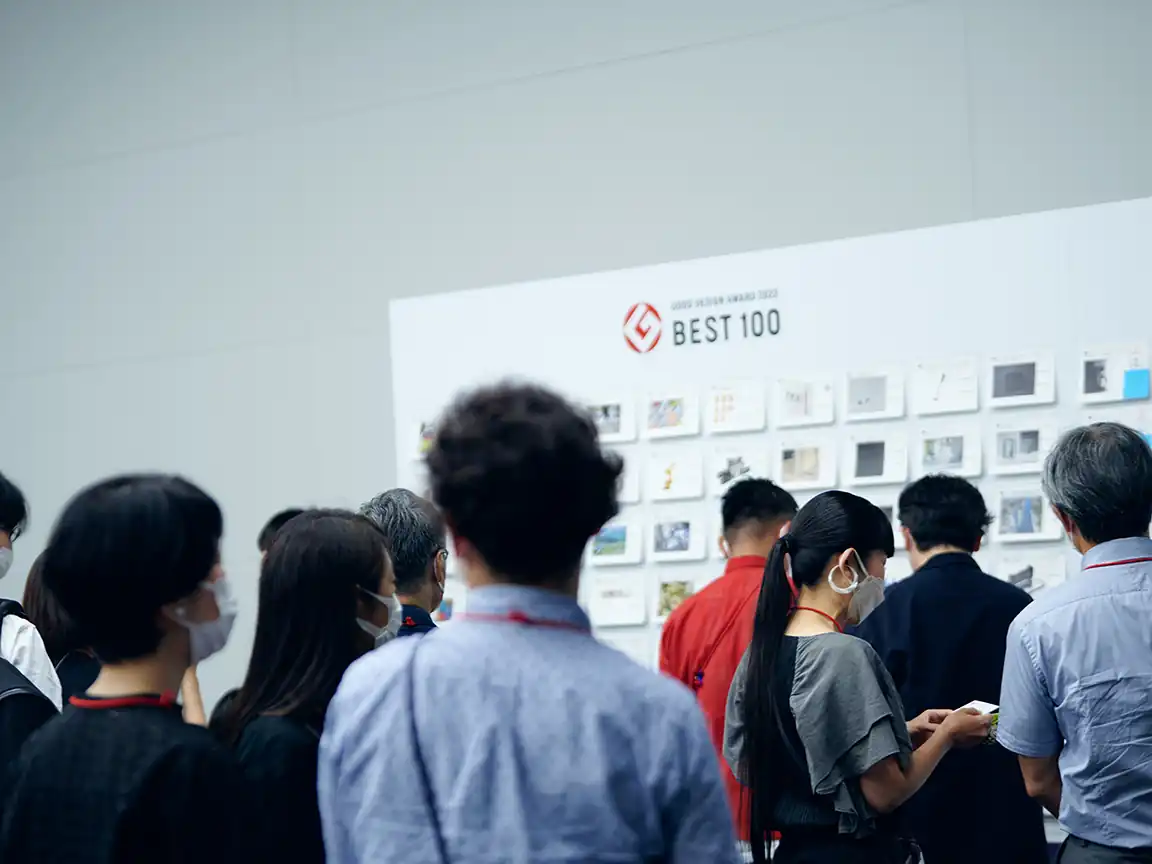
What challenges should designers face now, as found at the GOOD DESIGN AWARDs.
FOCUSED ISSUES is a GOOD DESIGN AWARD initiative that depicts the future of design in society through the screening process.

2023 FOCUSED ISSUES
New Chairperson Talks about Outlook for 2023
New Chairperson Talks about Outlook for 2023 Be a “think tank” of design: Why the GOOD DESIGN AWARD FOCUSED ISSUES was renewed—Seiichi Saito, New Chairperson
2023.05.23
Be a “think tank” of design: Why the GOOD DESIGN AWARD FOCUSED ISSUES was renewed—Seiichi Saito, New Chairperson
FOCUSED ISSUES, an activity that considers and recommends new possibilities for design through the GOOD DESIGN AWARD screening process, have been conducted since 2015.
On the other hand, the role required for design and the GOOD DESIGN AWARD continue to expand and change with each passing year. In light of these changes, the 2023 GOOD DESIGN AWARD FOCUSED ISSUES structure will change substantially.
Authority to frontier—the role of the GOOD DESIGN AWARD has changed with the shift of the social mission of design, as deeply studied in the previous article. These changes are clearly reflected in the FOCUSED ISSUES. What innovative change will be made at this timing?
Seiichi Saito, this year’s newly appointed chairperson, talks about the updates to FOCUSED ISSUES and the thoughts that went into it.
The role of the GOOD DESIGN AWARD is to "create a big context"
It has been about 65 years since the GOOD DESIGN AWARD was established.
During this period of time, the role of "design" has continued to change, and in response, the role of the GOOD DESIGN AWARD has changed in various ways.
When first established by the Ministry of International Trade and Industry (now the Ministry of Economy, Trade and Industry (METI)) in 1957, the GOOD DESIGN AWARD (originally the "Good Design Product Selection System") was a certification system to ensure safe and secure quality products for consumers and to properly manage IP in the country. Therefore, the object of evaluation at that time was the "output" itself, which was a product.
Gradually, the processes and materials behind it as well as its contribution to the environment and society have come to be evaluated. Award-winning works now range from tangible products to intangible services and initiatives.
Currently, I feel it has become meaningless to talk about design in dualistic terms, either tangible or intangible. Although the final output can be a tangible product or an intangible service or social activity, intangible things lie behind tangible things and vice versa. This is because every work should have tangible and intangible elements. The only difference is the starting point.
The theme for 2023, "Design with Outcomes," was also set based on the awareness of issues (reference).
In an age when design has become so diverse that "certification" is no longer important, I believe the role of the GOOD DESIGN AWARD should be to "create a big context." Now that I have been appointed as the new chairperson, my belief is reaffirmed.
I have participated in the GOOD DESIGN AWARD screening since 2015. The trend of entries changes significantly every year. This means that a new wave of design is rising every year. In the GOOD DESIGN AWARD, we have seen the “wave” from various angles, and presented it in context.
For example, Otera Oyatsu Club, which won the Grand Award in 2018. I was vice chairperson at that time. I think many people, including myself, did not expect such a system to win the Grand Award.
https://www.g-mark.org/en/gallery/winners/9e00fe69-803d-11ed-af7e-0242ac130002Listening to the judges' feedback on this work, I could see the beauty of the system working by reconnecting existing organizations, people, things, and customs. I felt as if I had seen one complete form of so-called "social design."
The GOOD DESIGN AWARD screening process is not just a series of mechanical votes. As a result of a huge amount of discussion, award-winning works are "extracted."
I think we can evolve the GOOD DESIGN AWARD by minutely analyzing what is happening behind award-winning works and presenting them in a clearer context. I have always thought so since I became involved in the screening.
Make the GOOD DESIGN AWARD a Think Tank
We minutely analyze what is happening behind award-winning works and suggest what direction society should take. In other words, we want to make the GOOD DESIGN AWARD a kind of think tank.
In the background of this thinking, there is a sense of challenge that there are few design think tanks in Japan.
Many companies conduct research and consultation on the economy, declining birthrate, and aging population as well as DX. On the other hand, few institutions conduct research and studies in order to coordinate our efforts to improve the world in the domain of design and manufacturing.
In the UK, for example, the government agency NESTA (National Endowment for Science, Technology and the Arts), which subsidizes pioneering projects and human resources development in the three fields of science, technology, and the arts, has published a detailed report on the year's innovation trends. I think the GOOD DESIGN AWARD, which looks at design cross-sectionally every year, can serve as a think tank of design.

I believe this will enable us to present the "norms" that are essential for "co-creation" across industries and companies.
For example, even in the field of design, it is becoming essential to consider materials that have less impact on the environment and society, but there may be many ways of thinking about plastic materials alone. One of ways to address this is to provide laws and ordinances stipulating "the use of materials,” but experts in the field are not always available in the executive branch of the government. More than anything else, this approach may not be able to create "standards" that are acceptable to all stakeholders. In other words, a common understanding as a prerequisite for co-creation cannot be formed.
To achieve co-creation, it is necessary not only to impose standards from the top down but also to make a move from the private sector as well as to build consensus. I believe the GOOD DESIGN AWARD, in which companies and organizations from a variety of industries participate, will serve as a forum for consensus building.
Changes to FOCUSED ISSUES (1): To the method to extract themes after screening
In order to realize our vision of a "design think tank," we have made major updates to FOCUSED ISSUES this year, while keeping its existing strengths.
There are three major changes.
The first is giving meaning to the themes. We change the way to set themes from setting themes in advance to extracting them from the insights gained through the screening process.
When starting in 2015, different themes were set in each domain, such as “local community,” “earthquake reconstruction,” and “education.” In 2020, we adopted a system in which FOCUSED ISSUES Directors set themes more freely.
On the other hand, I want to catch what is happening in design and analyze it every year. This is why we have changed to the method to extract themes as a summary, which verbalizes and expresses what is happening in the year after the screening finishes.
Changes to FOCUSED ISSUES (2): To the system to allow us to incorporate more perspectives outside of "design"
The second is a change in the system.
Until 2022, several FOCUSED ISSUES Directors, selected from the judges, discussed works from their own perspectives.
This year, however, the chairperson and two vice chairpersons serve as conventional FOCUSED ISSUES Directors, in which three FOCUSED ISSUES Researchers join as outside experts.
The reason is to incorporate perspectives outside of design into the FOCUSED ISSUES.
Until last year, we tried to incorporate the perspectives of outside experts in the screening process through external critique (editor's note: experts from different academic fields, such as human life, manner, and social structure, participated to see GOOD DESIGN AWARD works from an objective perspective). This was independent of FOCUSED ISSUES. In 2022, for example, we invited Asa Ito, an aesthetics scholar, and Yutaka Nakamura, an anthropologist, to participate in a series of dialogues while overviewing the entire GOOD DESIGN AWARD.
The thoughts and words of critiques were published in interview articles or other forms. But I wanted to put them in writing to hand them down. I hope they will see works from their own perspectives outside of design as an "internal" researcher, rather than an "external" critique, and observe changes in design from various perspectives.
With these ideas in mind, this year we decided to invite three people, the aforementioned Yutaka Nakamura, Sakura Nomiyama (design historian and researcher), and Aki Hayashi (Executive Officer and Managing Editor of AlphaDrive Co., Ltd./Former Forbes JAPAN Web chief editor), to participate in FOCUSED ISSUES as FOCUSED ISSUES Researchers, not as external critics. I would like them to discuss how design is changing from the perspective of cultural anthropology, design history, and economics.
The reason why the chairperson and vice chairpersons also serve as FOCUSED ISSUES Directors is that this is the first year of the new system and we intend to make a case leading to the next year by ourselves. I thought that as the chairperson and vice chairpersons, who see all the works of all the units, we could assume the role of directors responsibly.
Changes to FOCUSED ISSUES (3): From “Director’s Message” to a report suggesting specific actions
The third is the form of deliverables.
The results obtained by FOCUSED ISSUES have been summarized in the form of "Director’s Message" by each FOCUSED ISSUES Director.
However, from now on, I would like to consolidate them into a form like a single report by a think tank without sticking to the form of "Director’s Message."
Until 2022, readers had to find hints in the Directors’ Messages. In this year's report, we would like to suggest specific actions that should be taken. For example, the fact that such designs appeared this year means that such designs are required in today's society, and we need to focus on this domain......
I hope designers and creators will change their next action by reading it. I would like to consolidate into a strongly supportive report.
In other words, in the previous FOCUSED ISSUES, periods were placed at the end of the screening, but from now on, as an image, an arrow is placed at the end, suggesting the direction of design.
Then, the new wave is connected to the next day and the next year. I think this is the role of the GOOD DESIGN AWARD and the Japan Institute of Design Promotion in the future.
The current role of design is to serve as a hub for co-creation

Behind these updates, we also renew our expectations for design.
We expect that design will be a co-creation protocol across different sectors and domains.
Designers freely traverse fragmented industries and companies and can convert perspectives from completely different domains. For example, I think that the idea of upcycling used denim into automotive interior materials can be developed by designers who are involved in different industries.
In order for completely different industries and companies to move toward co-creation, a protocol to connect between them is necessary. Design has the power to do this. The essence of design is to make co-creation possible.
In this light, I think people involved in design can play their roles more consciously and more actively.
By creating, sharing, and converting things that can be used not only in their own domains but in other domains, they can serve as a hub of co-creation beyond domains. Furthermore, I believe it is important for those who belong to common attributes of design to take action in solidarity.
I think such solidarity is possible now because the trend of cross-sectional discussion and solidarity has been growing for the past eight years since I first participated in the screening of the GOOD DESIGN AWARD.
Sharing a compass of which way to go, people involved in design can take action in solidarity. By making good things from good materials in a good process, and using them in good condition in society, we will move toward a better future.
I believe a major role of design is to create such a trend in Japan today.
Seiichi Saito
Creative Director | Panoramatiks Principal
Born in Kanagawa in 1975, Saito began his career in New York in 2000 after graduating from Columbia University with a Master of Science degree in Advanced Architectural Design (MSAAD). He returned to Japan after being selected as an artist for Echigo-Tsumari Art Triennial 2003. After working as a free-lance designer, he established Rhizomatiks Co., Ltd. (present Abstract Engine Co., Ltd.) in 2006. Leading the internal architecture department Panoramatiks, he is working as a planning and implementation advisor on a number of projects for governments and corporations. He was the Creative Advisor of Expo 2020 Dubai Japan Pavilion and the EXPO Co-creation Program Director for Expo 2025 Osaka, Kansai, Japan.
Shunsuke Imai
Photographer
He was born in Minamiuonuma City, Niigata in 1993. He became independent after working for amana Inc.


